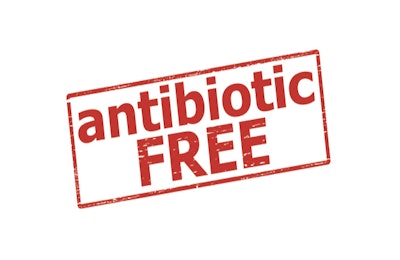
The ban on antibiotic growth promoters (AGPs) in the European Union in 2006 started a cascade of global events that, 15 years later, are still unfolding.
These changes are being driven by the worldwide recognition that antimicrobial resistance is a high priority public health issue.
The poultry industry has made enormous systemic changes to meet to the challenge of responsible antimicrobial use, particularly in countries where consumers, government and the industry itself have demanded and embraced action.
This megatrend has been a fantastic spark for innovation along the entire supply chain from marketing and business models through to infrastructure, certifications, nutrition and health technologies.
Different countries may have taken different paths at different speeds in their transition, yet the responsible use of antimicrobials is now a must - much like a license to operate in a society that demands that animal production be more sustainable. Additionally, antibiotic-free production has now been extensively demonstrated to be compatible with high productivity.
A classical curve of technological change in gut health management has formed.
In the early phase of transition, an initial decline in gut health and productivity is countered with a wave of management and nutrition improvements and alternative gut health strategies. These changes can be temporarily reflected in higher production costs.
However, after this transition phase, productivity levels become increasingly competitive and focus shifts to optimization. Subsequently, a new normal is achieved and new concerns take center stage.
The process has been completed in part of the world, while many countries are still in transition, adapting to new regulations or to the early development of an AGP-free chicken market.
The new gut health
A consequence of this global transition has been a profound change in how the poultry industry views intestinal health, and a more holistic approach to nutrition and health has emerged.
When AGPs are removed from production their replacement is not another product. Instead, a set of decisions and systems to address the various challenge sources and to protect the gut structure and function are being adopted.
Interrelated factors, such as fat quality and amino acid balance in diets, the environmental control of poultry houses and mycotoxin control, amongst others, are all now understood to form part of the gut health puzzle. Piecing the puzzle together means the difference between failure or success.
Close collaboration between nutritionists, veterinarians and production managers is now seen as critical by those companies that have spearheaded change. It is knowledge and collaboration that hold value when easy-to-use tools are no longer an option.
Completing the picture, a new generation of professionals who are more data driven than their predecessors and who have a more modern understanding of physiology and microbiology are now starting to reach positions of influence.
This, however, is still not the global picture, as parts of the world have not fully transitioned. Yet these new ways of thinking are gaining momentum. Innovative companies, regardless of regulations, are adopting production systems that address the new need for gut health, and they have plenty of tools and experience to draw upon.
The last miles in the journey to the new gut health paradigm will see further innovation. The challenge will be to develop solutions that fit local realities and producers’ needs in low-income countries with limited infrastructure.
A proactive effort to complete the global transition to responsible use of antimicrobials is not simply the right thing to do but is also a great opportunity for innovators.

















